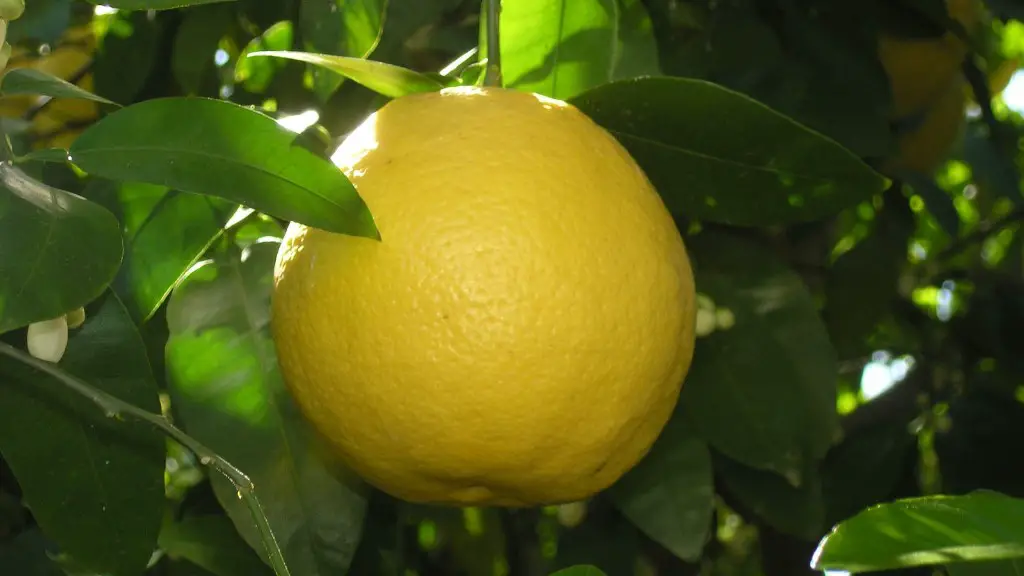Can you clone a lemon tree? The answer is yes, but it takes time and effort to do it correctly. Lemon trees are in temperate climates, meaning they need to be grown indoors in most areas. Cloning involves taking a cutting from a tree and replicating its genes, causing it to grow similar to its parent. This can be done through techniques such as air layering, grafting, and stem and root cuttings. In some cases, in vitro cloning using tissue cultures is necessary.
Air layering is done by creating a place for roots to form on the stem of the tree by removing a portion of the bark and wrapping it in a moist medium, such as sphagnum moss. After a few weeks, roots will form and a new plant can be separated from the parent and planted. Grafting is done by joining two plant parts, such as the leaves or fruit of one tree onto the rootstock of another. The union of the stock and scion complete a new plant.
Stem cuttings and root cuttings, however, are more popular ways of cloning lemon trees. Stem cuttings involve taking a cutting of a stem, while root cuttings involve taking a cutting of the roots. Both of these cuttings should be several inches in length, and they should be planted in well-draining soil. It is important to note that the cuttings should be taken from a healthy parent tree, and that they should be treated with a rooting hormone before they are planted.
In order to successfully clone a lemon tree, it is important to understand the environmental conditions that the tree needs to thrive. Lemon trees need a lot of light, so it is important to plant the cutting in a bright area. The soil should also be well draining and should be fertilized regularly. Additionally, the cloned tree should be watered every few days.
Cloning a lemon tree may seem daunting at first, but it is an achievable goal. With the right knowledge, know-how and a little patience, it is possible to produce a beautiful and healthy lemon tree from a single cutting. There is much to be gained from cloning a lemon tree, from giving a gift to creating a new genetic strain to add to the existing population of lemon trees.
Advantages of Cloning a Lemon Tree
Cloning a lemon tree can bring several advantages. It can allow a gardener to create a new variety of lemon tree. It can also provide a means to maintain certain properties in the tree over multiple generations, such as flavonoids, sugar concentration and disease resistance. Additionally, this process can expedite the growth cycle of the plant, producing mature trees in a shorter amount of time.
Cloning a lemon tree also affords the gardener the ability to save and store genetic material from the tree, giving them the opportunity to make further alterations to genetic traits in the future. This can be useful for creating trees that are disease-resistant, or for developing unique flavors for speciality lemon trees. Finally, cloning a lemon tree can preserve a tree’s genetic material for future generations to enjoy.
Disadvantages of Cloning a Lemon Tree
Although there are many advantages to cloning a lemon tree, there are also some drawbacks to consider. Cloning a lemon tree can be costly, as the materials and process used to take the cutting and propagate the new plant can be pricey. Additionally, the tree will not produce fruit right away, so the gardener may have to wait several years before they can enjoy the fruit that their tree produces.
Another potential issue is the potential for disease. Although cloning can be a great way to produce plants that are more resilient to certain diseases, there is still the potential for the cloned tree to be affected by common pests and diseases. As with any new tree, it is important to keep an eye on the health of the tree and take prompt action if anything appears out of the ordinary.
Essential Steps for Cloning a Lemon Tree
Cloning a lemon tree can be a rewarding experience, both for the gardener and for the environment. In order to have the highest chance of success, it is important to follow a few essential steps. First, the gardener must choose a healthy parent tree from which to take a cutting. Next, the gardener must decide which method of cloning to use. Finally, the cutting must be prepared, planted, and cared for properly in order to ensure a successful clone.
When taking a cutting, the gardener should ensure that the cutting is several inches in length and that it is taken from the healthy area of the tree. Once the cutting has been taken, it should be treated with a rooting hormone, if possible, and planted as soon as possible. The new plant should be placed in a bright location and watered every few days, and should be regularly checked for pests and diseases.
Propagating and Caring for a Cloned Lemon Tree
Once the cutting has been planted, the gardener should monitor the progress of the tree closely. If the tree appears to be unhappy, lacking in vigor, or affected by disease, it is important to take action quickly. If the tree looks healthy, the gardener should be sure to fertilize the tree regularly and water it every few days. Additionally, pruning can be very beneficial in keeping the tree healthy and shaped properly.
The most important step in developing a healthy, strong lemon tree is patience. Cloning a lemon tree can be a lengthy process and it can take up to a few years before the tree is mature enough to produce fruit. With patience and the right care the gardener will have a bountiful, beautiful lemon tree.
Protecting a Lemon Tree from Diseases
Cloning a lemon tree is a great way to produce resilient, disease-resistant plants, but it is also important to protect the tree from disease even after it has been cloned. The tree should be regularly checked for pests and diseases, and prompt action should be taken if any issues arise. Additionally, fertilizing the tree regularly and watering it every few days can help to protect it from disease.
It is also important to provide the proper environmental conditions for the tree to grow in. Cloned lemon trees should be grown in well-drained soil, in a bright indoor location. The tree should be exposed to plenty of light throughout the day, and the soil should be kept moist but never wet.
Finally, it is important to avoid stressing the tree with heavy pruning, or by exposing it to extreme temperatures. It is important to remember that while a lemon tree can be cloned, it still needs to be cared for in order to remain healthy and fruitful. By following these steps, the gardener will have a healthy lemon tree for years to come.



